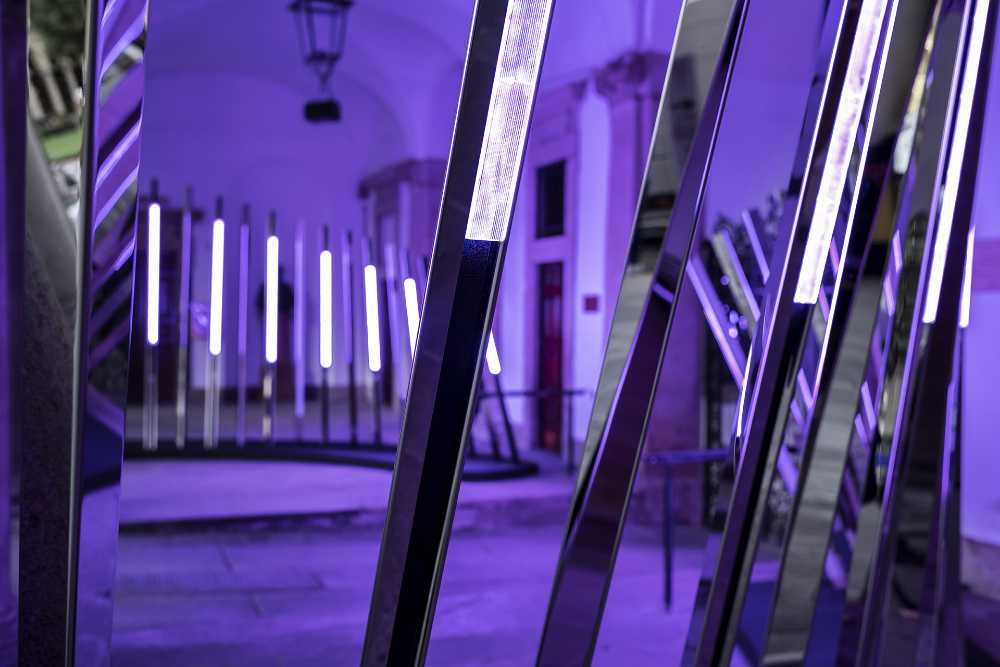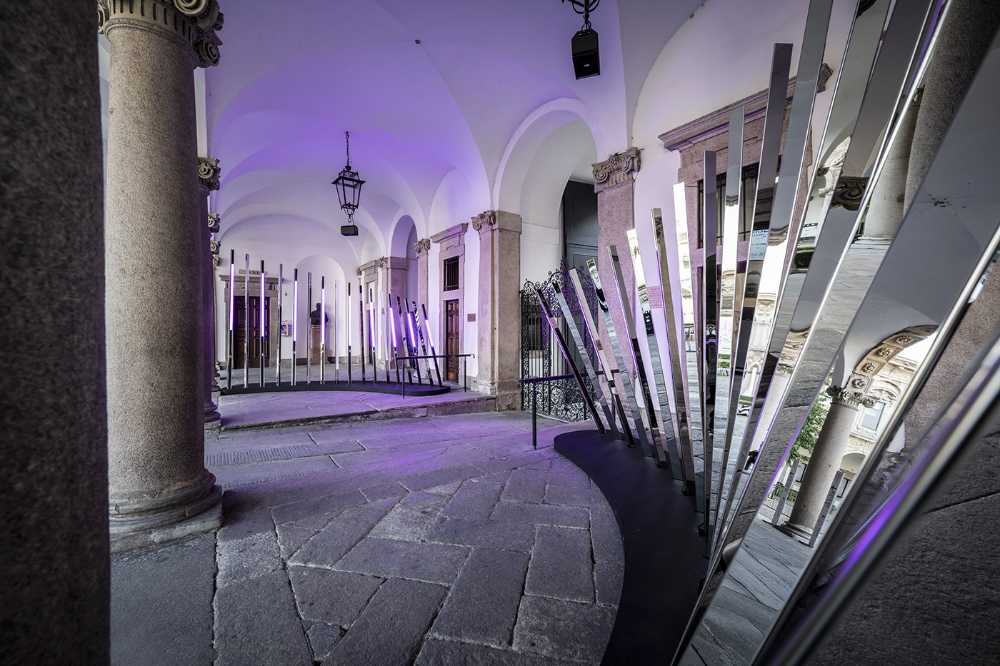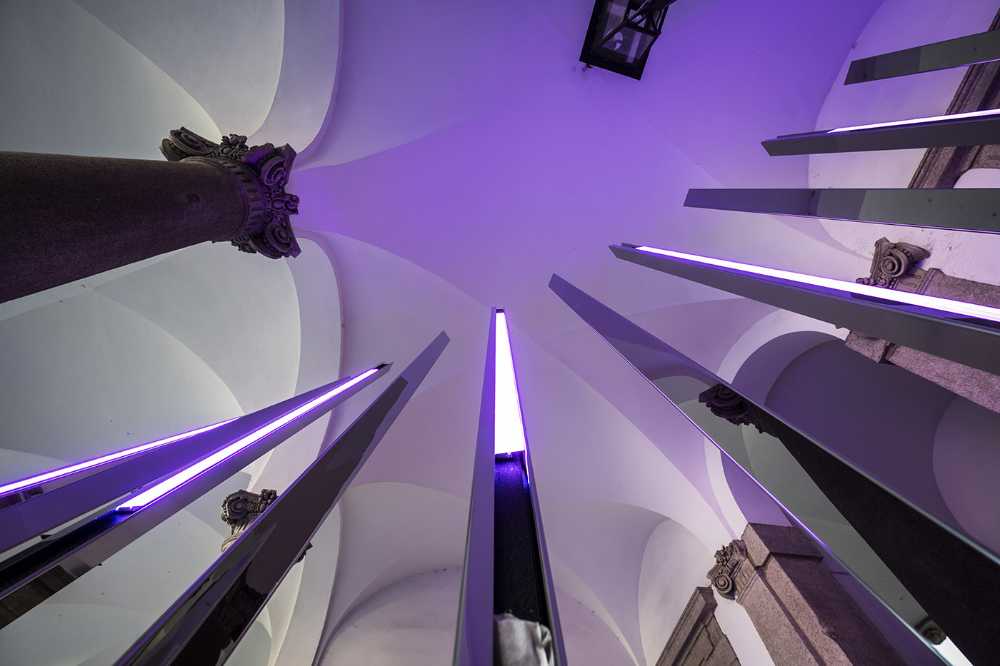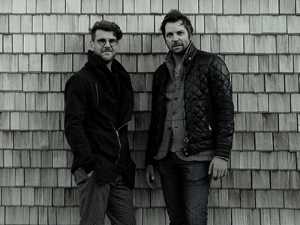Starting with the intention of stimulating human contact, "because architecture is always about people," noa* designs the Transsensorial Gateway, a sculptural work that combines multiple elements, including light, sound and movement in a direct dialogue with people and space. On either side of the gateway is a crown of light stems that, playing at different heights, visually amplifies the sequence of the seventeenth-century portico that serves as the setting for the installation


Transsensorial Gateway. An installation of light and sound designed to represent and stimulate human contact
The concept of the Transsensorial Gateway installation, created in the seventeenth-century porticoed atrium of the University of Milan, proposes a kind of light and sound landscape that welcomes visitors as they enter the exhibition
- #L'Europe
- #Italie
- #Focus
- #Design
- #Exposition
- #Innovation technologique

The light steles of the Transsensorial Gateway create relationships, building "bridges" between several people: the light reacts to the presence of visitors and at the same time reads the way they relate to each other. Through a "trans-sensory" mechanism, a musical and light score is created that is not only closely related to the mass and volume, and thus to the number of visitors, but also becomes itself the driving force of the installation. The result is an original, ever-changing, unique choreography of light and sound that further enriches visitors' emotional journey

The 34 stems that design the light corona on either side of the entrance are made of stainless steel coated with a reflective material, which amplifies the presence of people. Each element ranges in height from 2.50m to 4.00m and has a triangular cross-section of 7x7cm2. The know-how of the South Tyrolean company ewo made it possible to translate the concept of interactivity into a functioning system of light and technology. The stems are illuminated by LED units applied lengthwise and equipped with an innovative anti-glare technology called ewoLightTile

The sound composition, by Ebner Film + Music, was created specifically for this installation and programmed to react to the diversity of situations detected by the sensors. The sound is regulated by loudspeakers placed in the installation's display area, while sensors that adjust light and sound based on people's interactions are distributed along the array of stems

Gallery
Photo credits
Top image, content and gallery images: Alex Filz
Drawings: noa*












